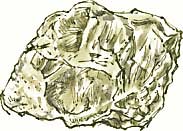



Wild West Yorkshire, Friday 3 December 2010
previous | this month | next




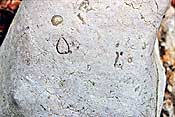
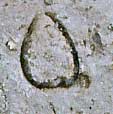 FLOWSTONE is a thin sheet of rock deposited in flowing water, you can see its dribbly texture on the bottom right corner of the first of these drawings which are all of the same 4.5cm (1.75 inch) chunk of limestone from the Grottes de Vallorbe in the Jura mountains. The Jurassic period gets its name from the limestones that are found in the Jura on the borders of France and Switzerland between the Rhone and Rhine. My Kodachrome slide (below left) show the crags behind the entrance to the caves.
FLOWSTONE is a thin sheet of rock deposited in flowing water, you can see its dribbly texture on the bottom right corner of the first of these drawings which are all of the same 4.5cm (1.75 inch) chunk of limestone from the Grottes de Vallorbe in the Jura mountains. The Jurassic period gets its name from the limestones that are found in the Jura on the borders of France and Switzerland between the Rhone and Rhine. My Kodachrome slide (below left) show the crags behind the entrance to the caves.
The label on this specimen which we bought in the gift shop at Vallorbe describes the specimen as a concretion, in geological terms: 'A nodule of distinct mineral composition occurring (usu. around a nucleus) in sedimentary rock.' according to the Shorter Oxford English Dictionary. In this sense the flowstone is gathering around a fragment of Jurassic limestone. The distinct mineral composition would be calcite, although the yellowish hue could suggest dolomite is also present.
I'm guessing that this fossil (right), that I photographed nearby, is a brachiopod - but it may be a bivalve, for instance Gryphaea.
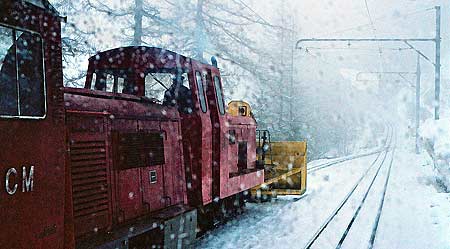
Mer de Glace: the snow plough had been up ahead of us.
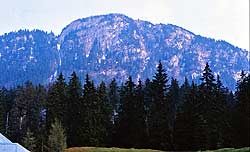
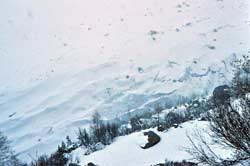 Mer de Glace
Mer de GlaceWe were in Switzerland at the end of April 1991, when I did some teaching at Versoix and, as I was studying geology at the time, I made sure that on my weekend off I did some geological sight-seeing. We also visited the Mer de Glace glacier on Mont Blanc above Chamonix. It was snowy and foggy so we couldn't see much of the glacier from the observation terrace near the terminus of the mountain railway but the sounds of the moving ice looming through the mist were impressive.
Richard Bell, illustrator
previous | this month | Wild West Yorkshire home page | next